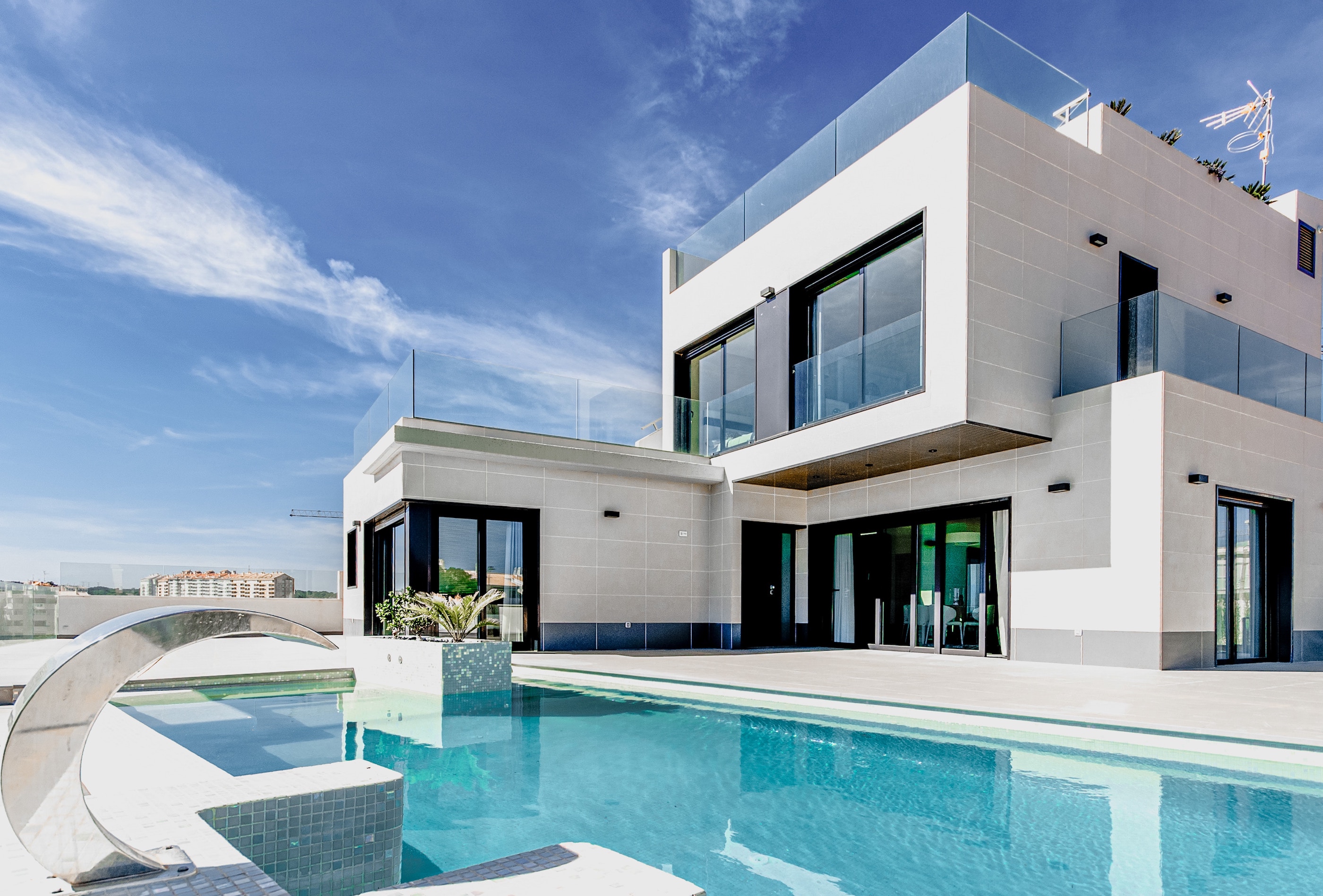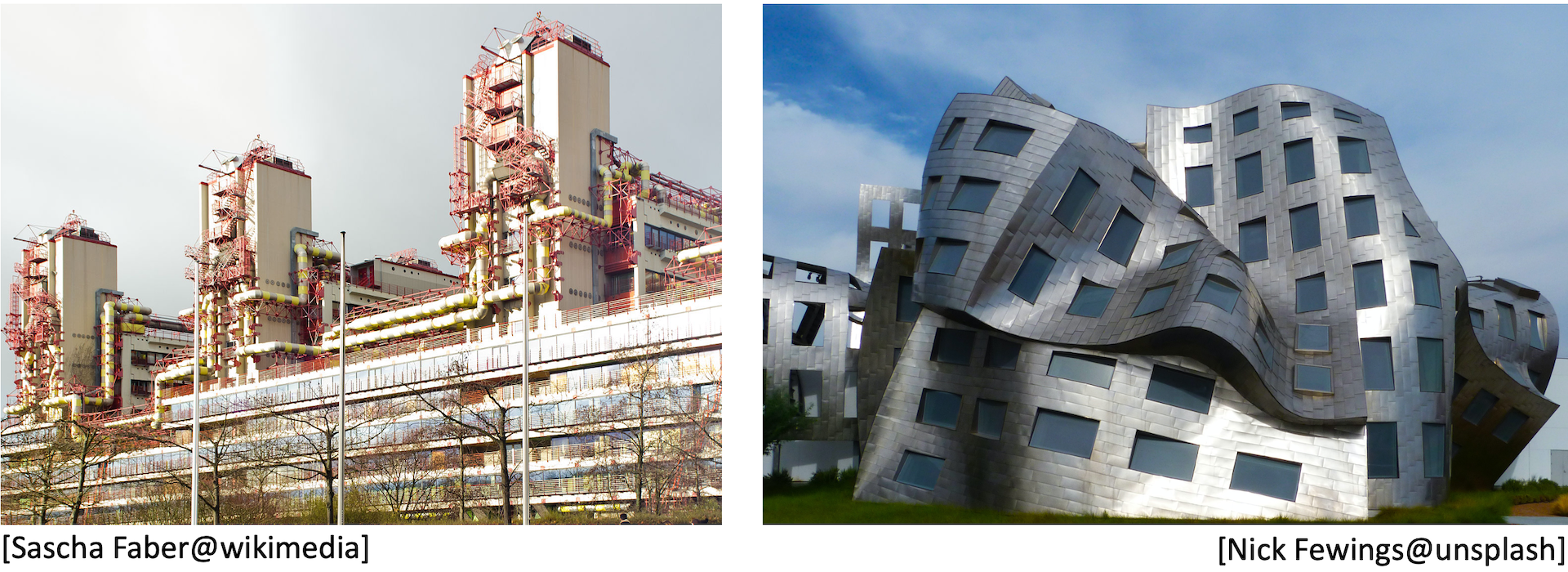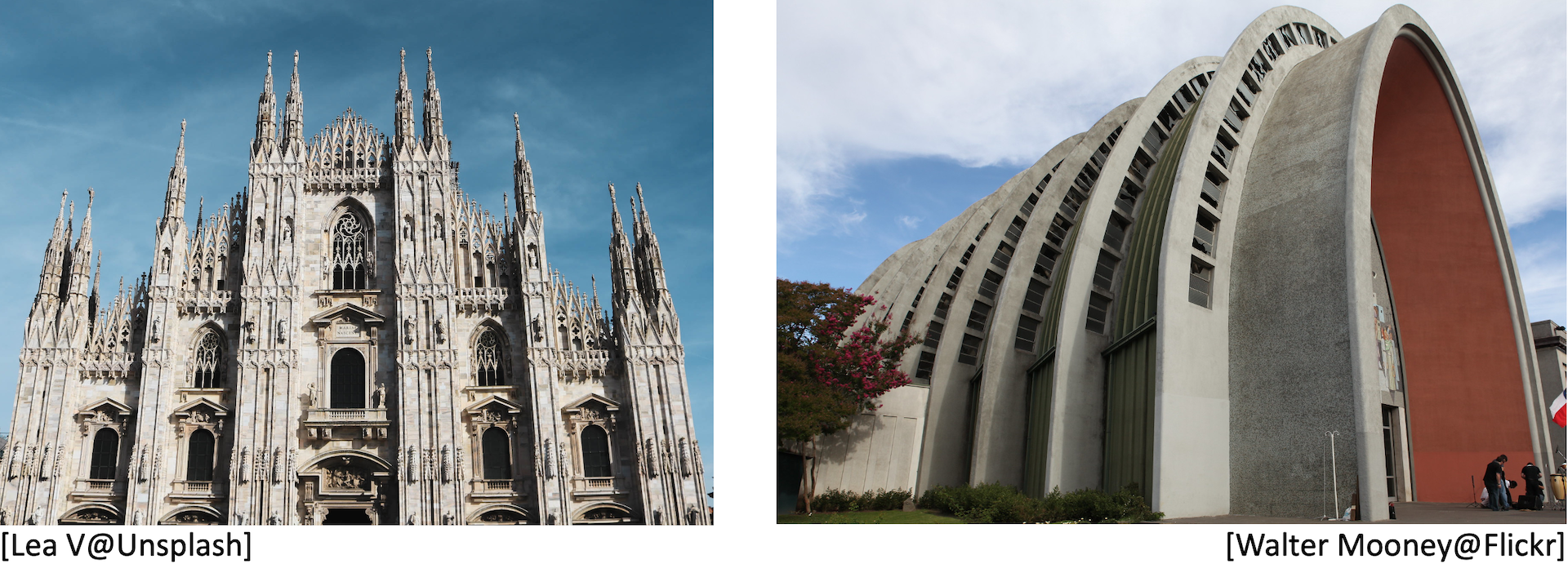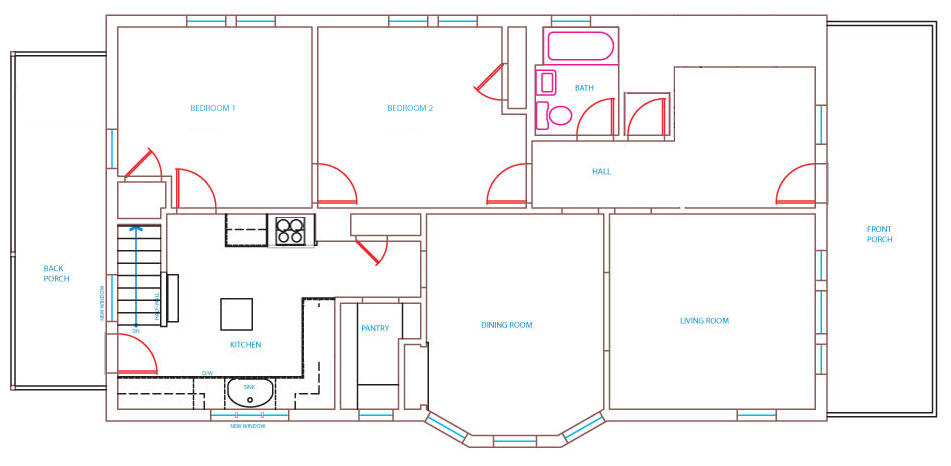Dieser Artikel ist auch auf Deutsch verfügbar
This article is part of a series
- Part 1: Building, purpose, aesthetics (this article)
- Part 2: Terms
- Part 3: Tasks and activities – How is it done?
- Part 4: Who does it?
- Part 5: Where does it go from here?
Architecture: ἀρχιτέκτων
The word architecture comes from the Greek ἀρχιτέκτων (arkhitekton) and can be defined as
the art and technique of designing and building, as distinguished from the skills associated with construction. It is both the process and the product of sketching, conceiving, planning, designing, and constructing buildings or other structures. from Wikipedia: Architecture.
The architecture of buildings is frequently based on their purpose. In software, we speak here of requirements. Residential building for one or more families? Office or administrative building? Museum, music hall, or sports arena?
Same purpose, different architectures
Figure 1 shows three different homes. Despite the identical purpose (living space for a family), they look entirely different.

In contrast to mathematics or physics, architecture is not an exact science. Architecture involves decisions arising from the specific context and a hefty dose of personal taste.
The three homes depicted above were built in different places, each subject to different conditions with regard to geography, weather, and surroundings:
- The Norwegian house on the left stands on stilts because the water level of the adjacent lake varies considerably.
- The middle house is located in a small town in Bavaria. It consists of a timber framework. In the Middle Ages, this was the preferred style for homes and businesses since buildings made entirely of stone were too expensive and difficult to create.
- The house on the right is located in the Swiss mountains, and the roof must be capable of withstanding the weight of heavy snowfalls. The ground floor is built in stone, while the upper story uses wood.
Individual decisions arising from the specific situations can be clearly identified. But the range of possibilities is yet greater still. If money is no object, a home can even look like the modern villa in Figure 2.

In other types of buildings, we also see significant differences in material and design. Let’s take a look at the two hospitals in Figure 3.

The University Hospital Aachen (left photo) personally reminds me more of an industrial facility or a power plant. The building on the right is the Lou Ruvo Center for Brain Health.
Allow me to offer yet another example of differing architectures for identical purposes: Figure 4 depicts two cathedrals – in other words, religious buildings (in this case even for practically the same form of belief as both belong to the Christian church).

The cathedral on the right side is optimized for earthquakes – meaning that it satisfies a very specific quality requirement. The U.S. Geological Survey has the following to say about this building:
A cathedral in the central square of Chillán, Chile replaces the ancient cathedral that collapsed during the strong earthquake of 1939. This modern structure was constructed with earthquake resistance as the primary consideration. The only damage caused by the M 8.8 earthquake on Feb. 27, 2010 was broken windows.
In other regions of the world, there are (practically) no earthquakes, which is why this type of requirement only applies to some buildings. Where it does apply, however, it is an extremely important consideration and calls for a number of sophisticated methods and techniques (more information on this topic can be found here).
Form, structure, and foundation
The architecture of buildings also includes their outer appearance, in other words the shape, size/height, and material of the facade.
However, it involves much more than these “external values.” For one thing, there is the structural engineering that provides for the stability of the entire building:
Structural engineering involves understanding and calculating the stability, strength, rigidity, and earthquake-susceptibility of built structures for buildings and nonbuilding structures.
Adapted from: Wikipedia/Structural Engineering
The selection and use of construction materials for the load-bearing walls and floors are critical aspects of structural engineering. Special attention is given to the foundation in particular: This requires that the responsible architects know something about the condition of the ground and soil as well as the surrounding landscape.
I was personally very impressed by the explanation of the technical skill and massive effort required to create the foundation for the Burj Kalifa, one of the tallest buildings in the world, in the loose desert sand of Dubai.
Rooms – the component model of buildings
The floor plan is a key document in building architecture, see Figure 5. This documents the internal layout of a building, or more precisely one floor of the building.

The floor plan also shows the position and dimensioning of windows and doors as well as entrances and exits. These can be compared with the interfaces in IT systems.
A number of other aspects are involved in this area of architecture:
- Position and design of stairs or elevators
- Heating and/or cooling systems as well as ventilation to ensure a comfortable room climate
- Sound insulation
- Fire protection measures
External interfaces…
Many buildings require connections to external systems:
- Drinking water and energy supply
- Wastewater systems
- Communication systems, such as internet or telephone
and more…
- Consideration of statutory requirements, such as fire safety, escape routes, maximum loads
- Consideration of other quality requirements, such as earthquake safety, water resistance, resistance to break-in attempts, vandalism, major weather events, especially high or low outside temperatures, etc.
- Consideration of budget limits
Broad spectrum of topics
It is clear that our namesake architects in the construction and real-estate industry must consider and implement a wide range of aspects in their design work. Some of these correspond to aspects we deal with in software and IT architecture, which is the topic of the next article in this mini-series.
Image references and other sources
Next Part: Important Terms in Software Architecture
Next week, the second part will be released.
